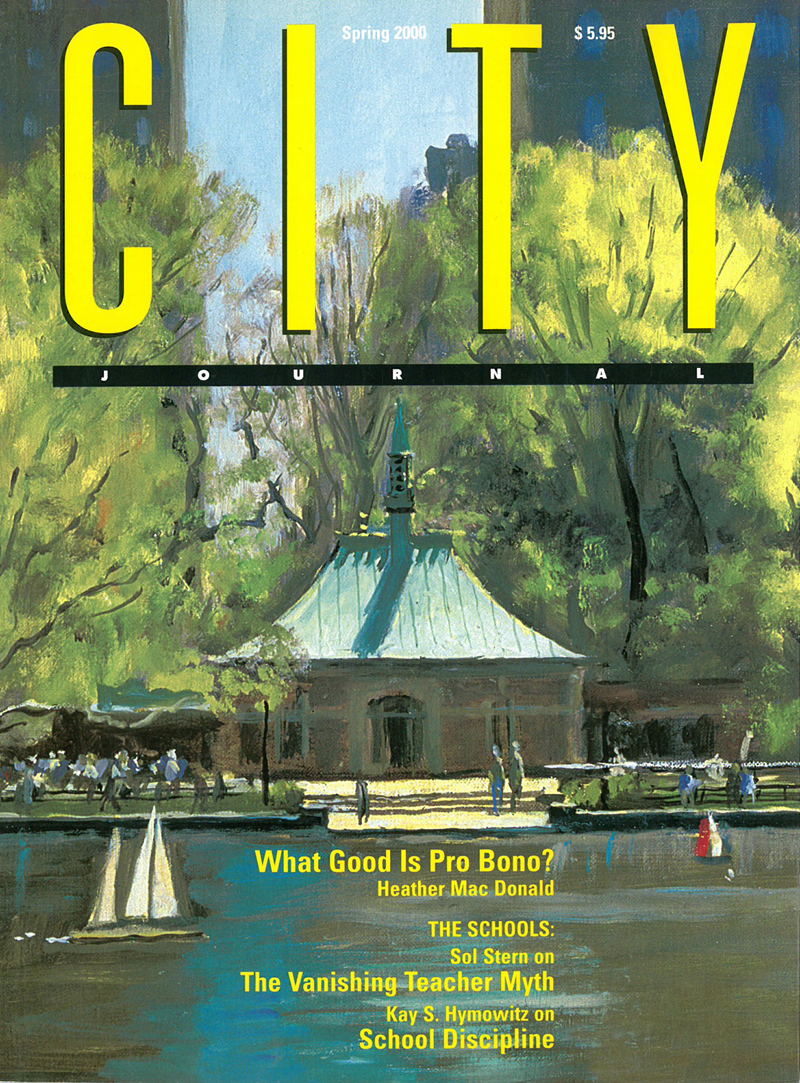There's nothing like a police shooting to expose the New York Times's racialist worldview. On March 16, an undercover New York City detective accidentally killed an off-duty security guard in a street scuffle—tragically, the second such police shooting since an Albany jury last month exonerated the four officers who killed Amadou Diallo last year. The facts in the new shooting are in hot dispute. But the Times has already delivered itself of its most important judgment in the case: race, it announced two days after the shooting, did not play a role in the incident. How it reached that conclusion is a remarkable revelation of the Times's anti-white bias.
Security guard Patrick Dorismond was the victim of a buy-and-bust drug operation gone awry. Several undercover officers approached Dorismond in a drug-infested area of midtown to solicit "krill"—crack cocaine; Dorismond, insulted, became angry, and a scuffle broke out that ended with Detective Anthony Vasquez's gun discharging into the security guard's chest. The police say that Dorismond initiated the fight and lunged for Vasquez's gun after the officers had identified themselves; Dorismond's supporters claim the police never identified themselves and punched Dorismond first.
On these disputed facts, the Times informed its readers on March 18 that "there were no indications that race had played a role [in the shooting], as was alleged in the death of Mr. Diallo." How did it reach that conclusion? Solely on the basis of the officers' skin color. As the Times helpfully explains, whereas the Diallo officers were white, "the three officers involved in the confrontation with [Dorismond] are Hispanic." End of story.
Let's unpack this reasoning. What was the evidence that race "played a role" in the Diallo shooting? Nothing, besides the Diallo officers' race. No one ever alleged that the four white officers had ever made racist statements; no one showed that the officers ignored white suspects to concentrate maliciously on blacks. Nevertheless, the Times takes for granted that when something bad happens between white officers and black suspects, race is the catalyst.
What was the evidence that race did not play a role in the Dorismond shooting? Nothing, besides the officers' Hispanic ethnicity. The Times presumes that when "officers of color" approach a black suspect, race could not, by definition, be a factor.
Now there are two ways in which race could play a role in a police-civilian encounter: racial profiling—a loaded term for an inevitable law-enforcement practice—or something far worse. Like it or not, when the three drug detectives approached Dorismond and his friends, they undoubtedly used their street experience that drug dealers around New York's Port Authority Bus Terminal are overwhelmingly black. When the Times says that race played no role in the Dorismond incident, does it really mean to suggest that only white officers take into account known racial correlations to various crimes in making stops? The charge is ludicrous, as even a Times Magazine article on racial profiling last year demonstrated. Black officers and police chiefs quoted in the piece freely acknowledged using race as one factor in street stops.
So when the Times singles out the Diallo incident for racial overtones, it must intend something far uglier than racial profiling. When the Times talks about the "role" of race in white officer/black suspect encounters, it must mean that a hostile, even murderous, racial animus fuels white officers.
New York City is currently at a boiling point over police-civilian relations, even though the NYPD's use of lethal force is at its lowest point in over 25 years. In 1990, one year into the failed mayoral administration of David Dinkins, there were two and a half times more fatal shootings per officer than today under Mayor Rudolph Giuliani; the absolute number of police shootings—41—was a whopping 73 percent higher than the 11 fatal shootings last year, even as the police ranks have greatly expanded.
The scurrilous Al Sharpton usually gets credit for stoking racial tensions in the city. But the New York Times deserves equal billing. With its poisonous fictions regarding race and the police, with its knee-jerk assumptions about white racism, the Times is on the forefront of racial divisiveness in New York and beyond.
